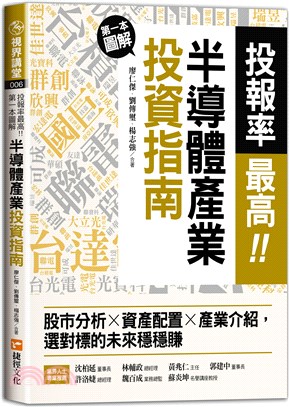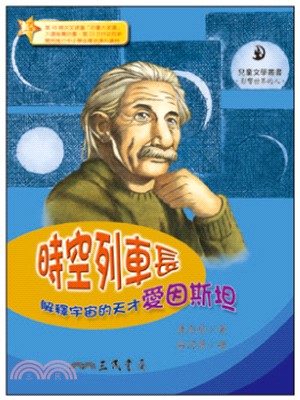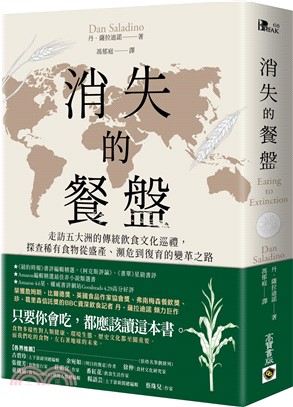商品簡介
編著者多年來一直從事環糊精的科學研究工作,在環糊精糖基轉移酶、y-環糊精、麥芽糖基環糊精、半乳糖基環糊精、羥丙基環糊精、環糊精在活性食品包裝中的應用以及環糊精抗谷物淀粉回生等方面進行了深入系統地研究,取得了豐碩的成果。作者將這些研究成果加以整理,并結合國內外環糊精最新研究進展,編著出版《環糊精:科學與技術》。
《環糊精:科學與技術》共分為八章,主要介紹了環糊精的概念、種類、結構、性質、環糊精及其衍生物的制備、表征及應用。重點介紹了環糊精糖基轉移酶的制備、分離純化及性質,常見環糊精(a-、β-、Y-環糊精)的制備工藝,分支環糊精(麥芽糖基環糊精和半乳糖基環糊精)和環糊精衍生物(甲基環糊精和羥丙基環糊精)的制備工藝、分離純化及分析檢測技術,環糊精在超分子化學中的應用基礎以及環糊精的工業和非工業應用,特別是環糊精在活性食品包裝中的應用。
全書內容豐富,可作為高校化工、食品、醫藥等專業的本科生和研究生的參考書,亦可供高校、科研院所從事環糊精研究的教學科研人員以及環糊精生產企業的技術人員參考。
作者簡介
先后在英國糖業技術研究中心、荷蘭WAGENINGEN大學、美國KANSAS STATE UNIVERSITY 等從事博士后以及訪問教授研究工作。
現任江南大學食品科學與技術國家重點實驗室主任、食品科學與工程國家一級重點學科帶頭人,兼任國務院學位委員會食品學科評議組召集人、科技部“十二五”食品科技戰略研究總體專家組組長、中國糧油學會副理事長。
在功能性碳水化合物資源開發與利用領域成果顯著,得到國家科技支撐重大項目、國家自然科學基金重點項目和國家“863”計劃資助,獲國家科技進步二等獎3項(2007,2009,2011)、國家教學成果二等獎2項(2001,2005),所指導的博士生2010年獲全國百篇優秀博士學位論文獎。
名人/編輯推薦
《環糊精——科學與技術》受到了國際知名學者及國外出版公司的一致好評。
目次
Acknowledgment
1.Introduction
Jun-Rong Huang, Hai-Ning Zhuang and Zheng-Yu Jin
1.2 Nomenclature,Classification,Structure and Property
1.2.1 Nomenclature
1.2.2 Classification
1.2.3 Struvture
1.2.4 Property
1.3 Inclusion Complex Formation,Preparation
1.3.1 Formation of inclusion complexes
1.3.2 Methods ofpreparation of inclusion complexes
1.3.3 Characterization of inclusion complexes
2.Enzymes in Preparing Cyclodextrins
Shengjun Wu, Xiu-Ting Hu,Jin-Moon kim and Jing Chen
2.1Introduction
2.2CGTase
2.2.1 The catalytic mechanism of CGTase
2.2.1.1 The structure of CGTase
2.2.1.1.1 The primary structure of CGTase
2.2.1.1.2 The domain and active centers of CGTase
2.2.1.2 The catalytic mechanism of CGTase
2.2.1.3 The advancesin the product specificity of CGTase research
2.2.2 Classification of CGTase and their bacteria sources
2.2.2.1 Classification of CGTase
2.2.2.2 Bacteria source of CGTase
2.2.3 The enzymatic properties of CGTase
2.2.3.1 The nature ofCGTase from Baallus
2.2.3.1.1 Molecularweight
2.2.3.1.2 Kineticconstants(Kmand Vmax)
2.2.3.1.30ptimum pH and pH stability
2.2.3.1.4 Optimum temperature and thermalstability
2.2.3.1.5 Effect of metalions on theenzyme activity
2.2.3.2 The nature of CGTase from B.alkalophilus sp.G1
2.2.3.2.1 Molecular weight
2.2.3.2.2 Kinetic constants (Km and V max)
2.2.3.2.3 Optimum pH and pH stability
2.2.3.2.4 Optimum temperature and temperature stability
2.2.3.2.5 Effect of metalions and other reagents on the activity of CGDTase
2.3 Preparation of CGTase by Fermentation
2.3.1 The types and the expansion of cultivation of the bacteria for preparation of CGTase
2.3.2 Controloffermentation conditions of CGTase
2.3.2.1 Medium composition
2.3.2.1.2 Nitrogen source
2.3.2.5 Immobilized production of CGTase
2.3.3 Determination of CGTase activity
2.4 Purification ofCGTase
2.4.1 Pretreatment and filtration offermentation broth
2.4.1.2 Organic solvent precipitation
2.4.2 Concentration and precipitation of crude enzyme solution
2.4.3.1 Affinity chromatography
2.4.3.2 Ion-exchange chromatography
2.4.3.3 Gel filtration or gelpermeation chromatography
2.4.3.4 Dialysis
2.5 The Substrate Catalysis Characteristics and Sources of Pullulanase
2.5.1 The substrate catalysis characteristics pullulanase
2.5.2 Source of pullulanase
2.6 The Substrate Catalysis Characteristics and Sources of Isoamylase
2.6.1 The substrate catalysis characteristics and of isoamylase
2.6.2 The source of isoamylase
2.7 The Source and Nature of Galactosidase
2.7.1 α-Galactosidase
2.7.1.1 The source of α-galactosidase
2.7.1.2 The transferase activity of α-galactosidase
2.7.2 β-galactosidase
2.7.2.1 Source of β-galactosidase
2.7.2.2 The transferase activity of β-galactosidase
2.8 Immobilization of the Enzymes for CD Preparation
2.8.1 Preparation of immobilized enzyme
2.8.1.1.1 Physicaladsorption
2.8.1.1.2 Ion exchange adsorption
2.8.1.1.3 The methods ofpreparation of the immobilized enzyme adsorption
2.8.1.2 Covalentbinding method
2.8.1.2 Covalent bingding method
2.8.1.3 Crosslinking
2.8.1.4 Embedding
2.8.2 Properties and application of immobilized enzyme
2.8.2.1 Immobilized enzyme activity
2.8.2.2 The catalytic properties of immobilized enzyme
2.8.2.2.1 Substrate specifiaty
2.8.2.2.2 The optimum pH of enzyme
2.8.2.2.3 The optimum temperature or theimmobilized enzyme
2.8.2.2.4 Michaelis constant (Km) and maximum reaction rate
2.8.2.3 Immobilized enzyme stability
2.8.2.3.1 Thermal stability
2.8.2.3.2 The stability toward various reagents
2.8.2.3.3 Stability toward protease
2.8.2.3.4 Operational stability
2.8.2.3.5 Storage stability
References
3.Preparation andAnalysis ofCyclodextrin
An- Wei Cheng and Jin-Peng Wang and Zheng- Yu Jin
3.1 Introduction
3.1.1 Enzymatic preparation of cyclodextrins
3.1.1.1 Non-controlsystem (add non-organicsolvent)
3.1.1.2 Controlsystem(addorganicsolvent)
3.1.2 Influence factors for CDs preparation
3.1.2.2 Reaction substrate
3.1.2.4 Temperature
3.1.2.6 Organic solvent addition
3.2 Industrial Process for α-Cyclodextrin Preparation
3.2.1 Control system
3.2.2 Non-control system
3.3 IndustrialProcess for β-Cyclodextrin Preparation
3.3.1 Control system
3.3.2 Non-controlsystem
3.4 The Preparation of γ-Cyclodextrin
3.4.1 Controlsystem
3.4.2 Non-controlsystem
3.5 Preparation of theLR-CDs
3.5.1 Enzyme for LR-CDs preparation
3.5.2 Process of LR-CDspreparation
3.5.3 Separation and purification of LR-CDs
3.6 Quantitative and Qualitative Analysis for Cyclodextrin
3.6.1 Cyclodextrin quantitative analysis
3.6.1.1 UV spectrophotometry
3.6.1.2 High performanceliquid chromatography
3.6.2 Cyclodextrin qualitative analysis
3.6.2.1 Paper chromatography and thin layer chromatography
3.6.2.2 Gas chromatography
3.6.2.3 Capillaryelectrophoresis
3.6.2.4 High performance anion-exchange chromatography with pulsed amperometric detection
3.6.2.5 Mass spectrometry and nuclear magnetic resonance
References
4.Preparation ofBranched- Cyclodextrins
Xing Zhou, Yao-Qi Tian and Zheng- Yu Jin
4.1 BasicTheories
4.1.1 Synthesis mechanisms
4.1.2 Using CD and maltodextrin/starch as raw material
4,1.3 Using CD and a-maltosyl fluoride (α-G2F) asrawmaterial
4.1.4 The preparation of galactosidase and enzymatic preparation of Gal-CD
4.2 Preparation of Mal-CDs
4.2.1 Reaction conditions
4.2.1.1 Pullulanase activity
4.2.1.2 Optimization of the production of Mal-β-CD by pullulanase
4.2.1.2.1 pH value
4.2.1.2.2 Temperature
……
5.Preparation and Analysis of Cyclodextrin Derivatives
Chao Yuan, Yu-Xiang Bai and Zheng- Yu Jin
7.Use of Cyclodextrins in Food, Pharmaceutical and Cosmetic Industries
Yao-Qi Tian, Xing Zhon and Zheng- Yu Jin
書摘/試閱
2.2.1.1.2.The domain and active centers of CGTase Starch-degrading enzyme can be divided into α-amylase family GH13, β-amylase family GH14 and glucoamylase family GH15 according to primary structure and structural domain.With the development of investigations, a number of new enzymes have emerged.For example, pullulanase,isoamylase, neopullulanase and other members were added to a-amylase family GH13.The amylase family GH13, GH70 and GH77 can be classified as glycoside hydrolase family GH-H, and CGTase (EC2.4.1.19) was member of GH-H, which hydrolyzed starch to produce CD.Among all GH-H family members, there are four common characteristics: (a) Catalytic structural domain possesses (p/a)8 barrel structure, which is also called TIM-barrel structure, and is often referred to as structure domain A, and is a eight parallel p-sheet in closed state outsourcing eight a-helix; (b) Similarly conserved regions,including the consistency of the secondary structure, especially the conformity of p-sheet; (c) The fourth p-sheet of aspartic acid functions as a nucleophile, and the fifth p-sheet of the glutamic acid functions as a proton donor, and the seventh p-sheet of the aspartic acid maintains the stability of substrate binding when the enzymes perform a catalytic role; (d) The same mechanism of breaking of a-glycosidic bond.
As a member of the starch hydrolase family, CGTase also has these charac-teristics, but the enzymes from different sources have their own special features.However, a number of different structural domains of CGTase are different from each other.For example,CGTase from B.circulan.s, Klebsietla oxytoca and Pyrococcus furiosus has 5, 4 and 4 structural domains, respectively, while most of amylases only have two AB structural domains, i.e., a-amylase structural domain.
主題書展
更多主題書展
更多書展本週66折
您曾經瀏覽過的商品
購物須知
大陸出版品因裝訂品質及貨運條件與台灣出版品落差甚大,除封面破損、內頁脫落等較嚴重的狀態,其餘商品將正常出貨。
特別提醒:部分書籍附贈之內容(如音頻mp3或影片dvd等)已無實體光碟提供,需以QR CODE 連結至當地網站註冊“並通過驗證程序”,方可下載使用。
無現貨庫存之簡體書,將向海外調貨:
海外有庫存之書籍,等候約45個工作天;
海外無庫存之書籍,平均作業時間約60個工作天,然不保證確定可調到貨,尚請見諒。
為了保護您的權益,「三民網路書店」提供會員七日商品鑑賞期(收到商品為起始日)。
若要辦理退貨,請在商品鑑賞期內寄回,且商品必須是全新狀態與完整包裝(商品、附件、發票、隨貨贈品等)否則恕不接受退貨。

























